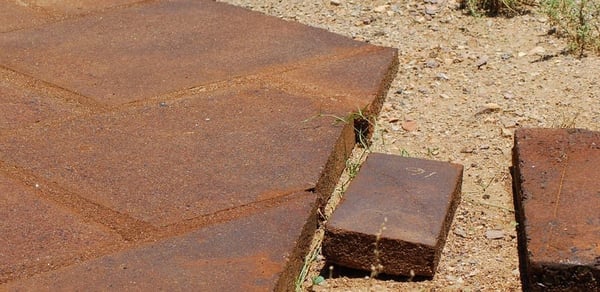Carbon Negative Future - Emergence of Carbon Negative Construction Materials
With the growing popularity of Ferrock manufacturing, the use of Ferrock material make it an attractive option to use. The Ferrock material has many uses for sustainability and represents a great alternative.
Why Should You Use Ferrock Material?
The search to find sustainable and carbon neutral alternatives to current construction systems is causing many new materials to emerge, which are aiming to improve upon current environmental conditions. One of the materials which has been most aimed at in trying to replace it or find an alternative is concrete.
Currently around 4 billion tons of concrete is produced each year which releases carbon dioxide into the air whilst also being created from generally unsustainable raw materials. One such material to emerge aiming to replace it is Ferrock, which is aiming replace or reduce the use of concrete with a carbon negative and better performing material, comprised mostly from recycled materials.

Ferrock Slab (https://www.buildabroad.org/2016/09/27/ferrock/)
What is Ferrock Material?
What does Ferrock Manufacturing involve?
Ferrock is created from waste steel dust (which would normally be thrown out) and silica from ground up glass, which when poured and upon reaction with carbon dioxide creates iron carbonate which binds carbon dioxide from the atmosphere into the Ferrock.
Roughly 95% of the Ferrock is made from recycled materials, Ferrock is both stronger and more flexible than normal Portland cement, allowing it to be used in highly active environments where there is a consideration for seismic activity.
What is the cost of Ferrock?
Currently it is much cheaper as it is sourced from waste materials, it is carbon negative as it absorbs more carbon dioxide than it creates when it is hardening and is also relatively chemically inactive allowing it to be used in places like salt water without deterioration with the salt making it stronger.

Ferrock Wall (https://www.buildabroad.org/2016/09/27/ferrock/)
How will using Ferrock Benefit you?
This material holds the possibility of being very successful for small projects, although application in large projects may not yet be viable as sourcing large quantities of waste materials may be difficult and prove unsustainable. If it becomes more widely used, then the price of these products which are currently waste materials may become more prized and therefore more expensive, although with the current expansion of building growth these materials will most likely remain readily available.
In the future, we must continue to research and explore new building materials which are more sustainable than the ones which we currently use, which greatly contribute to global green house emissions.
With this emergence of new materials, thermal rating processes such as BASIX in NSW will have to adapt to recognise such materials and inturn will allow these materials to contribute to the reduction of greenhouse gas emissions and building waste.






